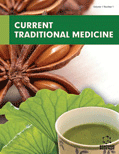Abstract
Isoflavonoids were rich in natural source and gained great attention due to their diverse activities such as antioxidant, estrogenic, radical scavenging and prevention of cardiovascular and coronary heart diseases. Numerous isoflavonoids, usually present as isomers, were found in traditional medicines and dietary supplements. For better understanding of the unknown components, thorough investigation on the known analogue compounds was essential and helpful. In the present study, a new developed fourier transform mass spectrometry (FTMS), named Orbitrap, which applied as a hybrid instrument with one type of linear ion trap (LTQ), was used. Collision induced dissociation (CID) and higher collision energy dissociation (HCD) were applied in both negative and positive ion modes. Association between fragmentation patterns and different substitution modes were clarified. In most cases, the key differences just lie in distinct abundance of the fragment ions. Therefore, comparative studies on series of spectra profiles were more useful than simple consideration of the fragmentation pathways sometimes. General fragmentation rules of isoflavonoinds and distinctive characteristic of some isomers were summarized by combined use of CID and HCD methods. The obtained results would be valuable for structural characterization of analogues in isoflavone rich traditional medicines and dietary supplements.
Keywords: Collision induced dissociation (CID), fragmentation library, Higher collision energy dissociation (HCD), high resolution milti-stage MS, isoflavone, Orbitrap.
Current Traditional Medicine
Title:Association between Fragmentation and Various Substitution Features: A Study on Isoflavonoids Analogues by CID and HCD Using LTQ Orbitrap Mass Spectrometry
Volume: 1 Issue: 3
Author(s): Min Yang, Zhe Zhou, Hua Qv, Baohong Jiang, Xuan Liu, Wanying Wu and De-an Guo
Affiliation:
Keywords: Collision induced dissociation (CID), fragmentation library, Higher collision energy dissociation (HCD), high resolution milti-stage MS, isoflavone, Orbitrap.
Abstract: Isoflavonoids were rich in natural source and gained great attention due to their diverse activities such as antioxidant, estrogenic, radical scavenging and prevention of cardiovascular and coronary heart diseases. Numerous isoflavonoids, usually present as isomers, were found in traditional medicines and dietary supplements. For better understanding of the unknown components, thorough investigation on the known analogue compounds was essential and helpful. In the present study, a new developed fourier transform mass spectrometry (FTMS), named Orbitrap, which applied as a hybrid instrument with one type of linear ion trap (LTQ), was used. Collision induced dissociation (CID) and higher collision energy dissociation (HCD) were applied in both negative and positive ion modes. Association between fragmentation patterns and different substitution modes were clarified. In most cases, the key differences just lie in distinct abundance of the fragment ions. Therefore, comparative studies on series of spectra profiles were more useful than simple consideration of the fragmentation pathways sometimes. General fragmentation rules of isoflavonoinds and distinctive characteristic of some isomers were summarized by combined use of CID and HCD methods. The obtained results would be valuable for structural characterization of analogues in isoflavone rich traditional medicines and dietary supplements.
Export Options
About this article
Cite this article as:
Yang Min, Zhou Zhe, Qv Hua, Jiang Baohong, Liu Xuan, Wu Wanying and Guo De-an, Association between Fragmentation and Various Substitution Features: A Study on Isoflavonoids Analogues by CID and HCD Using LTQ Orbitrap Mass Spectrometry, Current Traditional Medicine 2015; 1 (3) . https://dx.doi.org/10.2174/221508380103151231125640
| DOI https://dx.doi.org/10.2174/221508380103151231125640 |
Print ISSN 2215-0838 |
| Publisher Name Bentham Science Publisher |
Online ISSN 2215-0846 |
 14
14
- Author Guidelines
- Bentham Author Support Services (BASS)
- Graphical Abstracts
- Fabricating and Stating False Information
- Research Misconduct
- Post Publication Discussions and Corrections
- Publishing Ethics and Rectitude
- Increase Visibility of Your Article
- Archiving Policies
- Peer Review Workflow
- Order Your Article Before Print
- Promote Your Article
- Manuscript Transfer Facility
- Editorial Policies
- Allegations from Whistleblowers
- Announcements
Related Articles
-
Expression and Role of the Calcium-Sensing Receptor in the Blood Vessel Wall
Current Pharmaceutical Biotechnology A Review of Sirt1 and Sirt1 Modulators in Cardiovascular and Metabolic Diseases
Recent Patents on Cardiovascular Drug Discovery Synthesis, Characterization and Evaluation of Gemfibrozil-Stilbene Hybrid as Antioxidant Agent
Letters in Drug Design & Discovery Reduced Risk of Incident AD with Elective Statin Use in a Clinical Trial Cohort
Current Alzheimer Research Repair of Dilated Aortic Root and Sinotubular Junction Using a Stabilizer Ring
Recent Patents on Cardiovascular Drug Discovery Bio Molecular Considerations in Major Depression and Ischemic Cardiovascular Disease
Central Nervous System Agents in Medicinal Chemistry Medicinal Chemistry of ATP Synthase: A Potential Drug Target of Dietary Polyphenols and Amphibian Antimicrobial Peptides
Current Medicinal Chemistry The Role of Niacin in Lipid-lowering Treatment: Are we Aiming Too High?
Current Pharmaceutical Design The Impacts of Non-coding RNAs and N<sup>6</sup>-Methyladenosine on Cancer: Past, Present and Future
Current Cancer Drug Targets Non-Alcoholic Fatty Liver Disease in the Metabolic Syndrome
Current Pharmaceutical Design Transcatheter Aortic Valve Implantation versus Surgical Aortic Valve Replacement: Meta-Analysis of Clinical Outcomes and Cost-Effectiveness
Current Pharmaceutical Design Microarray Profiling Analysis Uncovers Common Molecular Mechanisms of Rubella Virus, Human Cytomegalovirus, and Herpes Simplex Virus Type 2 Infections in ECV304 Cells
Current Molecular Medicine Molecular Remodeling of the Insulin Receptor Pathway by Thiazolidinediones in Type 2 Diabetes Mellitus: A Brief Review
Protein & Peptide Letters Trimetazidine Dihydrochloride Pulsatile–Release Tablets for the Treatment of Morning Anginal Symptoms: Dual Optimization, Characterization and Pharmacokinetic Evaluation
Current Drug Delivery Recommendations for the Treatment of Hypertension in Elderly People
Cardiovascular & Hematological Agents in Medicinal Chemistry Myocardial Perfusion and Coronary Vasomotor Function: Emerging Role of PET Imaging
Vascular Disease Prevention (Discontinued) Oxidative and Nitrosative Stress and Immune-inflammatory Pathways in Patients with Myalgic Encephalomyelitis (ME)/Chronic Fatigue Syndrome (CFS)
Current Neuropharmacology Effects of Imidazolic Agonism on Blood Pressure, Sympathetic Activity, Left Ventricular Hypertrophy and Insulin Resistance
Current Hypertension Reviews Nutrient and Qualitative Phytochemical Analysis-evaluation of Antimicrobial Activity and Development of Products with Mulberry Leaves (<i>Mulberry indica</i> L.)
Current Nutrition & Food Science The Woman’s Heart: Insights into New Potential Targeted Therapy
Current Medicinal Chemistry


























